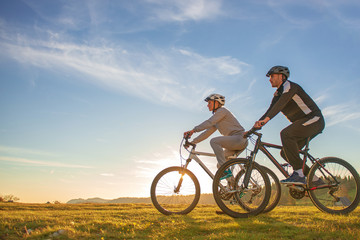Identifying Common Injuries in the Weekend Warrior
by Ryann Roberts, DPT, Cert DN
Owner, Doctor of Physical Therapy
Many of us fit the pattern of a weekend warrior – work and family throughout the week restrict our ability to participate in fitness and activities. So instead, we complete vigorous workouts and recreational activities on weekends. The negative side to being a weekend warrior is the increased risk of these common injuries:
Golf/Tennis Elbow
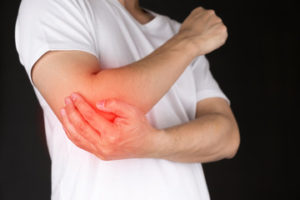 Symptoms: pain with gripping activities, pulling activities, throwing or swinging activities. Pain to palpation of the inner or outer aspect of the elbow joint.
Symptoms: pain with gripping activities, pulling activities, throwing or swinging activities. Pain to palpation of the inner or outer aspect of the elbow joint.
The reason for it: overuse of the wrist flexors or extensors is the usual cause of the pain. When these muscles are too tight and not stretched-out they begin to pull on their attachment point near the elbow causing the tendon to pull away from the boney attachment which is painful.
How physical therapy helps: forearm muscle stretching, manual tissue release of the causative muscle fibers. PT may utilize dry needling or cupping for these muscles as well.
Prevention for Weekend Warriors: proper stretching of the wrist flexors and extensors is best along with proper wrist joint mobility.
Ankle Sprain
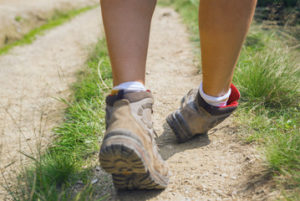 Symptoms: usually a known mechanism of injury as stepping on an uneven surface or moving laterally and having the foot roll out. Common symptoms would be swelling, tenderness on the outside of the ankle and lower leg, decreased range of motion and mild to moderate pain with walking. If you are unable to put weight on the affected leg (walk) within 5 minutes of the injury you should seek medical attention for an X-ray to rule out a fracture.
Symptoms: usually a known mechanism of injury as stepping on an uneven surface or moving laterally and having the foot roll out. Common symptoms would be swelling, tenderness on the outside of the ankle and lower leg, decreased range of motion and mild to moderate pain with walking. If you are unable to put weight on the affected leg (walk) within 5 minutes of the injury you should seek medical attention for an X-ray to rule out a fracture.
The reason for it: damage to the ligaments and tendons of the outside of the ankle. The ligaments and tendons are over stretched causing micro tears which is what a sprain is.
How physical therapy helps: getting proper early motion, modalities such as ice and education on the recovery is extremely helpful. PT can also use hands on light soft tissue work to reduce swelling thereby reducing pain and getting back to function earlier. Sometimes the fibular head of the bone that makes up the outside of the ankle gets pulled ‘out of place’ causing more pain. PT can perform mobilizations and manipulations to reduce the stuck joint and increase the speed of recovery.
Prevention for Weekend Warriors: wear supportive shoes for your activity. If you have a history of ankle sprains, a brace may be helpful. Stretch out the ankle in all directions prior to the activity and perform the activity within your limits. Performing single leg balance until you are able to hold 30 seconds with eyes closed really helps the supporting muscles increase the proper strength and reaction times to limit ankle sprains as well.
Achilles Tendinitis
 Symptoms: pain in the back of the heel (calcaneus) up to the lower portion of the calf muscle (where the heel cord begins). Pain is usually localized to the area of injury or swelling and increases with pressure coming up on the toes.
Symptoms: pain in the back of the heel (calcaneus) up to the lower portion of the calf muscle (where the heel cord begins). Pain is usually localized to the area of injury or swelling and increases with pressure coming up on the toes.
The reason for it: usually achilles tendinitis is caused by having too tight of calf muscles. Not doing proper stretching and foam rolling leads to increased strain on the tendon which causes swelling and pain.
How physical therapy helps: PT uses manual soft tissue work to reduce the swelling and pain of the localized painful area and also attacks the adhesions and tight spots in the calf that are the cause of the increased tension on the tendon. PT also utilizes ice and education to reduce the healing time and reduce the pain.
Prevention for Weekend Warriors: proper stretching of the calf muscle with a runner-stretch and more importantly a runner-stretch with the knee bent to reach the deeper soleus muscle of the gastric-soleus complex that makes up the calf muscles. When there is less pain, performing single-leg heel raises with the knee straight and with the knee slightly bent is very helpful in strengthening the calf muscle complex.
Shin Splints
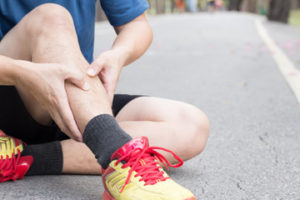 Symptoms: pain on the front of the lower leg increasing with running. Pain when actively pulling your foot toward your head.
Symptoms: pain on the front of the lower leg increasing with running. Pain when actively pulling your foot toward your head.
The reason for it: The most common cause of shin splints is having tight and over powerful calf muscles. The role of the anterior tibialis muscle on the front of the lower leg is to pull the foot up and control the return to the ground during walking or running activities. When the calf muscle is over powering the anterior tibialis or there is improper running mechanics (too much heel strike and not enough running on the forefoot), the anterior tibialis begin to be pulled away from the bone causing pain and swelling in the front of the lower leg.
How physical therapy helps: PT uses manual techniques of soft tissue work with the hands or instrument assisted techniques to reduce the swelling and pain in the front of the lower leg and reduce the tightness of the calf muscles. PT can also educate on proper stretching, strengthening and running mechanics to reduce the time needed to heal and prevent future recurrences. PT can also use specific taping techniques to reduce the pain and symptoms of shin splints.
Prevention for Weekend Warriors: Just like with Achilles tendinitis, maintaining proper calf muscle flexibility and strength is key to preventing shin splints. Also, proper training for the activity is recommended –just showing up to run a 5k or an obstacle course race is not wise.
Hamstring/Groin Strain
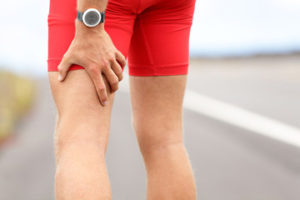 Symptoms: pain in the back of the upper leg or groin area; usually during running, lifting or jumping activities. There is usually immediate pain that causes the activity to cease when the injury occurs.
Symptoms: pain in the back of the upper leg or groin area; usually during running, lifting or jumping activities. There is usually immediate pain that causes the activity to cease when the injury occurs.
The reason for it: Improper stretching or warm up is the cause. It can also be caused by over loading the legs with activity or weight that the muscles are not trained to handle.
How physical therapy helps: easy stretching, soft tissue massage, and education about the symptoms and return to activity.
Prevention for Weekend Warriors: prepare by practicing the movements that will be needed for the activity, perform static 30-60 second stretches after training or on off days and then doing dynamic stretching to warm up the joints and muscles before training or the activity to have the muscles and tendons ready to handle the activity you are going to perform.
Low Back Pain
 Symptoms: mild to severe pain in the low back area. Difficulty bending forward, rotating, or side bending. The pain can be point specific or global across the entire back.
Symptoms: mild to severe pain in the low back area. Difficulty bending forward, rotating, or side bending. The pain can be point specific or global across the entire back.
The reason for it: generally back pain is the result of muscles tightening up in an effort to protect the spine and not releasing. The muscles can also become strained like the hamstring or groin.
How physical therapy helps: education on proper body positioning during standing, sitting, laying; easy stretching to all joints and muscles that effect the back, soft tissue massage/manipulation to reduce tissue strain and pain, improve muscle strength.
Prevention for Weekend Warriors: know your limits, proper stretching of the low back, gluts, hip flexors are key to preventing low back injury pain.
Dehydration
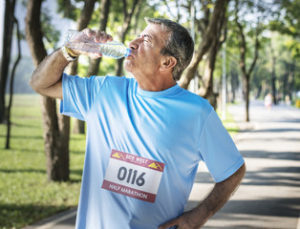 Symptoms: extreme thirst, reduced sweating though feeling overheated, fatigue, malaise, dizziness, muscle cramps
Symptoms: extreme thirst, reduced sweating though feeling overheated, fatigue, malaise, dizziness, muscle cramps
The reason for it: the blood is made up of mostly water, when the body uses the water to cool the body through sweat and the loss of water through normal breathing the blood thickens – this causes the heart to work harder to move oxygen rich blood through the body and the body begins to hoard what water it does have which causes overheating.
How physical therapy helps: education on the risks and injuries that can be associated with dehydration.
Prevention for Weekend Warriors: drink plenty of fluids for the activity. Do not ignore early symptoms such as muscle cramping and thirst to prevent the larger problems of muscle injury, decreased oxygenation of the body, fatigue and ultimately organ damage.

